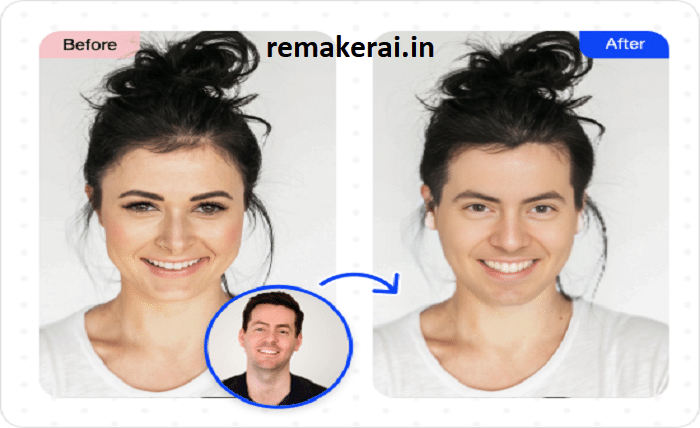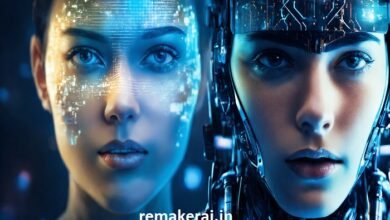Videos AI Face Swap: Transforming Digital Media

In recent years, the phrase “videos AI face swap” has become increasingly popular in the realm of digital media. This technology allows for the seamless swapping of faces in video content, creating new experiences for viewers. From entertainment to education, AI face swap technology is transforming how we interact with digital media. In this blog post, we will delve into the intricacies of video AI face swap, exploring its applications, benefits, challenges, and prospects.
The Technology Behind AI Face Swap
AI face swap technology relies on advanced algorithms and machine learning techniques. By analyzing facial features and expressions, AI can map one person’s face onto another’s in a video. The video’s AI face swap process involves training neural networks with large datasets of facial images, enabling the system to recognize and replicate facial structures accurately. This technology has evolved rapidly, with deep learning models like Generative Adversarial Networks (GANs) playing a crucial role in enhancing the realism of face swaps.
Applications in Entertainment
The entertainment industry has been one of the earliest adopters of video AI face swap technology. From movies to TV shows, AI face swap has created stunning visual effects. For instance, actors can be digitally de-aged or transformed into entirely different characters, expanding creative possibilities. Music videos, advertisements, and even social media content have also embraced videos AI face swap to captivate audiences with novel and engaging visuals.
Revolutionizing Marketing and Advertising
In the marketing and advertising sector, video AI face swap is opening new avenues for personalized and targeted campaigns. Brands can create advertisements featuring celebrities or influencers without the need for them to be physically present. This technology allows for cost-effective and scalable content creation, ensuring that marketing efforts remain fresh and relevant. Videos AI face swap also enables the localization of advertisements by swapping faces to match the target demographic, enhancing the connection with the audience.
Enhancing Educational Content
Videos AI face swap is making waves in the educational field by creating immersive and interactive learning experiences. Educators can use this technology to produce engaging instructional videos where historical figures or subject matter experts deliver lectures. This approach can make learning more relatable and memorable for students. Additionally, video AI face swap can be used to dub educational content into multiple languages, broadening its accessibility.
Ethical Considerations and Concerns
While video AI face swap technology offers numerous benefits, it also raises significant ethical concerns. The potential for misuse, such as creating deepfakes for malicious purposes, is a major issue. Deepfakes, which are highly realistic manipulated videos, can spread misinformation, defame individuals, and even influence political outcomes. Addressing these ethical challenges requires robust legal frameworks, technological safeguards, and public awareness about the responsible use of video AI face swap technology.
Addressing Privacy Issues
Privacy is another critical concern associated with video AI face swap. The use of personal images and videos to create face swaps can infringe on individuals’ privacy rights. To mitigate these risks, it is essential to establish clear consent protocols and ensure that individuals are aware of how their likenesses will be used. Companies and developers must prioritize transparency and accountability when implementing video AI face swap technology.
Legal Implications and Regulations
The legal landscape surrounding video AI face swap is still evolving. Governments and regulatory bodies are working to establish guidelines and laws to govern the use of this technology. Intellectual property rights, defamation laws, and privacy regulations are all areas that need to be addressed. As video AI face swap becomes more prevalent, stakeholders must collaborate on creating a legal framework that balances innovation with protection.
The Future of AI Face Swap Technology
The future of video AI face swap technology is promising, with continuous advancements on the horizon. Researchers are working on improving the accuracy and realism of face swaps, making them indistinguishable from genuine footage. Integration with other AI technologies, such as voice synthesis and emotion recognition, will further enhance the capabilities of video AI face swap. As this technology evolves, it will undoubtedly find new applications across various industries.
Conclusion
Videos AI face swap technology is revolutionizing the digital media landscape, offering exciting entertainment, marketing, education, and beyond possibilities. However, it also presents ethical, privacy, and legal challenges that must be carefully navigated. By addressing these concerns and fostering responsible use, we can harness the full potential of videos AI face swap to create innovative and impactful experiences. As we move forward, the continued development and regulation of this technology will shape its role in our digital future.
FAQ
1. What is a video AI face swap?
Videos AI face swap is a technology that uses artificial intelligence to swap faces in video content, creating realistic and seamless transformations.
2. How does video AI face swap work?
Videos AI face swap works by training neural networks with large datasets of facial images. The AI analyzes facial features and expressions to map one person’s face onto another’s in a video.
3. What are the applications of video AI face swap?
Applications of videos AI face swap include entertainment (movies, TV shows, music videos), marketing and advertising, and educational content creation.
4. What are the ethical concerns related to video of AI face swap?
Ethical concerns include the potential misuse of technology to create deepfakes for malicious purposes, spread misinformation, and infringe on individuals’ privacy rights.
5. How can we address the privacy issues associated with video AI face swap?
Addressing privacy issues requires establishing clear consent protocols, ensuring transparency, and creating robust legal frameworks to protect individuals’ privacy rights.





